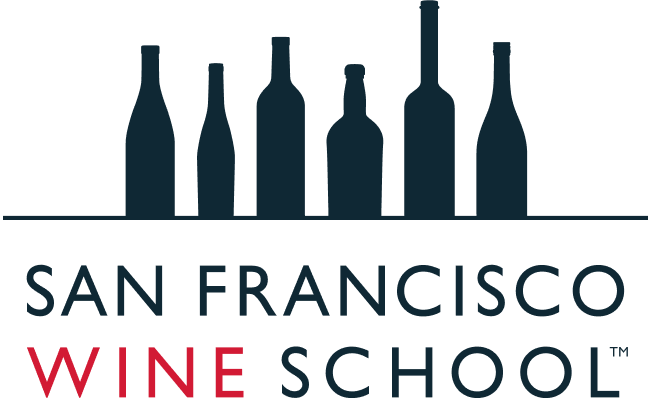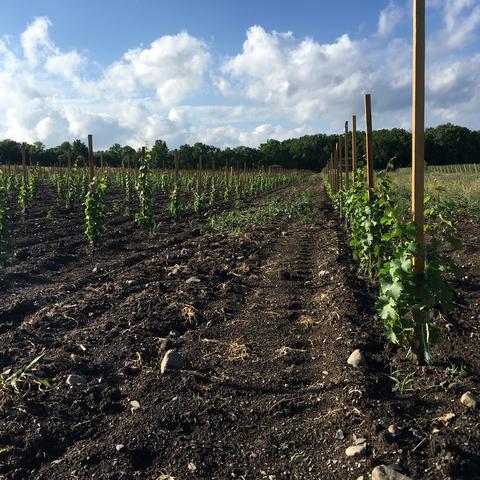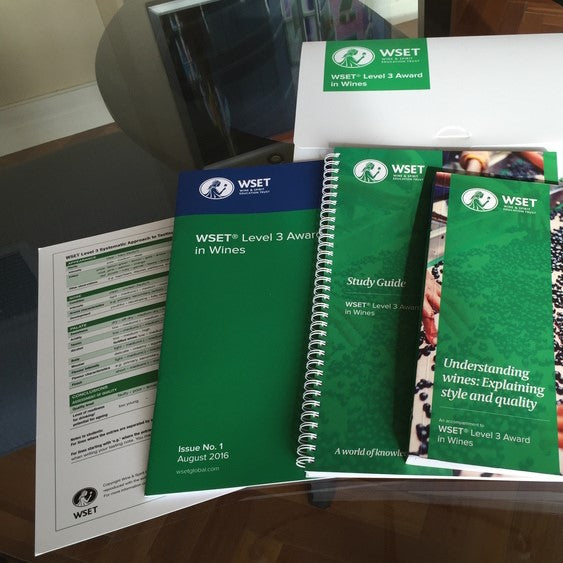by David Furer
This summer’s heat dome has enveloped New York’s Finger Lakes as it has much of the US northeast. Here it’s ensured that vines are progressing slightly ahead of schedule with some water stress to contend with; growers are projecting the harvest of early-ripening whites as soon as early September. If the warmth extends into the autumn it might herald a turning point for the AVA’s reds, many of which suffer from being too phenolically and/or sugar underripe.
ELEMENT
Launched in 2006, Master Sommelier Christopher Bates and his father Bob’s Element Winery lives in a converted working garage in the village of Arkport. Sourcing fruit from a dozen or so acreage contracts throughout the FLX in the pursuit of making wines that “aren’t necessarily the single best but the most representational for the region,” the goal of the younger Bates.
This summer’s heat dome has enveloped New York’s Finger Lakes as it has much of the US northeast. Here it’s ensured that vines are progressing slightly ahead of schedule with some water stress to contend with; growers are projecting the harvest of early-ripening whites as soon as early September. If the warmth extends into the autumn it might herald a turning point for the AVA’s reds, many of which suffer from being too phenolically and/or sugar underripe.
ELEMENT
Launched in 2006, Master Sommelier Christopher Bates and his father Bob’s Element Winery lives in a converted working garage in the village of Arkport. Sourcing fruit from a dozen or so acreage contracts throughout the FLX in the pursuit of making wines that “aren’t necessarily the single best but the most representational for the region,” the goal of the younger Bates.
His winemaking style tends toward the reductive, something easily witnessed in their having stuck their neck out by producing what’s so far merely adequate Syrahs; the ’13 out of barrel, cropped at just 1.6tons/acre, is more on track than the too lean ’11 out of bottle. In my opinion FLX’s top performing red, Cabernet Franc, suits them better with their ’13 from Mark Wagner’s vineyard seamless though still not as pretty as the ’14 yet to be bottled.
Another of these eccentricities is that when visiting in July I discovered its 2011 Riesling hadn’t yet been released because Chris felt it hadn’t yet evolved into what he wanted to express from this tricky vintage. He said he’ll retreat from producing Riesling after bottling the 2014 vintage, in part because there “are already a lot of people make good Rieslings here, so my energies are better spent in developing better reds from the FLX…and maybe Chardonnay." Bates divides his time between the winery and the bustling FLX Wienery, ‘doggie diner’ shared with his wife Isabel Bogadtke. The German Bogadtke is another refugee from high-end restaurant work, though with the couple’s new single-table restaurant FLX Table in Geneva it seems they’re more content to be owner-operators in fun, mid-level joints.
KEMMETER
Former winemaker at his neighboring Anthony Road Winery Johannes Reinhardt, bestowed with top honors at the 2009's NY Wine Competition, chose his grandmother’s maiden name to adorn his solo…and life project… winery.
“Seeing only 40-60 people Thursday through Saturday for tastings by appointment of five wines and having a slow stream of direct-consuming customers sold by my wife Imelda and I,” said the Rheingau native, “we’re growing slow & steady. Nobody has more passion for wine than those who pay the bills, and we like to spend time with people who enjoy our wines.” Their tasting room is adjacent to their house, all of which is surrounded by six acres of vines; 3 Riesling, 2 Pinot Noir, half Pinot Blanc with Gewurztraminer and Zweigelt to follow in a few years. He’s bottled wine made from others’ grapes at Red Tail Ridge and Sheldrake Point since 2012 with his hope to be fully independent by 2018. He’s currently selling direct to a few New York restaurants but doesn’t wish to expand beyond these limits. “It’s my responsibility to live the way God would want us to live, to avoid judgmental behavior,” said the quick-witted and devout man.
“Seeing only 40-60 people Thursday through Saturday for tastings by appointment of five wines and having a slow stream of direct-consuming customers sold by my wife Imelda and I,” said the Rheingau native, “we’re growing slow & steady. Nobody has more passion for wine than those who pay the bills, and we like to spend time with people who enjoy our wines.” Their tasting room is adjacent to their house, all of which is surrounded by six acres of vines; 3 Riesling, 2 Pinot Noir, half Pinot Blanc with Gewurztraminer and Zweigelt to follow in a few years. He’s bottled wine made from others’ grapes at Red Tail Ridge and Sheldrake Point since 2012 with his hope to be fully independent by 2018. He’s currently selling direct to a few New York restaurants but doesn’t wish to expand beyond these limits. “It’s my responsibility to live the way God would want us to live, to avoid judgmental behavior,” said the quick-witted and devout man.
With the exception of his sweetish, entry level Sonero Reinhardt focuses on spontaneously fermented Riesling, a natural inflection of sacchromycses and other strains. “The cleaner you keep your environment the more the natural yeasts can show themselves. By not inoculating I can see more dimension and texture on the palate, that the acidity has more harmony within the wine, perhaps adding more complexity.” He once de-acidified but now eschews this. As with Bates his winemaking style tends toward the reductive, even preferring a bit of turbidity when racking his wines. However my star attraction is his Sheldrake Point Vyd. 2015 with its bright, fruity nose and a touch of sulfur, a moderate sugar level with bracing acidity, a slatey finish and a touch of botrytis character—all of which make it a dead ringer for a Mosel Spaetlese.
Photo above is of Kemmeter's newly-planted estate vineyard, taken by the author.
Photo above is of Kemmeter's newly-planted estate vineyard, taken by the author.
RED TAIL RIDGE
Having first studied under Carole Meredith at UC-Davis, Nancy Irelan went on to become Gallo’s VP for R&D where she became familiar with work done at Cornell College, the impetus for her inspiration to relocate to this “young, a bit rustic region ready to grow.” Irelan now oversees New York’s only LEED-certified winery with the next phase to be an underground cellar and an elevated tasting room. Other unusual aspects include some of her variety and style choices.
“The reason I decided to make a sparkling Teroldego was in 2008 I was able to harvest a bit of crop from the vines I’d planted in 2006. The acid was relatively high but was poignant, so I thought it could go through a secondary fermentation as the fruit flavors were forward.” Irelan only makes 50-100cs. from any vintage, considering that “if we didn’t sell it I could drink it myself with my partner/husband Michael Schnelle.” Irelan saw an opportunity to invest and help grow a region, remarking that “sometimes timing is everything and it seemed like the right time. We bought 34 acres with a house on it on the west side of Seneca Lake, and had some money leftover to plant vines." Irelan dabbles with spontaneous fermentations, an example of which I tasted in the form of a 2014 Riesling Petillant that showed a lot of ripe fruit with good balance. “When I use added yeasts I try not to lose the vineyard.” Soils here are 7.8-7.9pH and heavily calcareous with more clay as the lake grows closer. She and Schnelle have stuck their collective necks out further by growing Lagrein and Dornfelder. “The tannic and phenolic structure of fruit from a warm climate is more difficult to manage it than a cool climate so that it doesn’t overpower the wine. Here we’ve more delicacy in our wines; but as a lover of sparkling wines I prefer those which have more fruit-forwardness.”
Producing 8000 cases annually, Red Tail Ridge’s flagship wine is its estate Dry Riesling, “and the knowledge base of Finger Lakes wine is based in that,” she asserts. However Irelan admits to loving the challenge of making sparkling wine with the ultimate objective to enjoy it. “I like the sensation of the bubbles. I don’t need to hold back on celebrating so I drink sparkling wine every day and drink it even with pizza and potato chips.”
RAVINES
Owner/winemaker Morten Hallgren started producing wine for his Ravines brand in 2002 along Keuka Lake where one of two of his and wife Lisa’s visitor sites is located. The Danish/French Hallgren arrived in the Finger Lakes in 1999 after working for his family’s Castel Roubine estate in Provence, Cos d’Estournel in St. Estephe, Cordier in Texas, Biltmore in NC then for Dr. Konstantin Frank six years before setting out on with Lisa to begin their own vineyard & winery. Echoing Irelan’s sentiments “what drew us to this area is that it’s a cool climate region ‘in the making’ whereas in the US it’s always shocked me that there’s a lack of these sort of regions,” said Morton. “There are amazing wines made on the west coast but they’re more Mediterranean in style.” Though at 45% of production Riesling is his #1 concern, Hallgren works with a lot of Cabernet Franc and a small amount of Cabernet Sauvignon, with reds accounting for an solid 35% of Ravines’ production. Marketed by Winebow, Ravines is in 23 states with 65% of its production of occurring as ex-NY sales, “and more of that will occur as Finger Lakes wineries are becoming more accepted.”
A fan of open-top fermentation, Ravines’s dry Rieslings are first hand harvested and whole-cluster pressed. Both the 2011 and 2014, while pleasant to drink now, have the balance and flavor spectrum to greatly benefit from a few years aging. His current release sparkling Brut 2006, 50% each Chardonnay and Pinot Noir, was disgorged in 2014 with only 4g/l dosage. Its very nuanced aromas garnered from extended lees aging are beautifully integrated tapering off to a crisp finish. Hallgren attributes the quality of the wine to that of the limestone-based Argetsinger vineyard site at the SE corner of Seneca Lake. Also look out for his Chardonnay, a good % of which may be made from overly mature grapes to balance out the naturally high corresponding acidity, and fermented&aged in a mixed range of ages of French oak barrels.
SWEDISH HILL
Farming 87 acres and sourcing from other local growers Swedish Hill owner Dave Peterson told me that “in the years that we think we’ve the best cool season potential are those when we make our Brut—and then only disgorging 50 cases at any time,” leaving many bottles on the lees for disgorging as needed. This was borne out in his full-bodied, Chardonnay-dominant 2006, its toasty nose and palate taken from eight years spent on the lees. “We’ll next release our 2009,” he confirmed. “Compared to warmer climate wines our grapes ripen less phenolically but have more fruit character at lower sugar levels.”
Started in 1995 by Peterson’s parents, Swedish Hill aside from within NY it’s spottily available in Sweden and Canada. His four Rieslings all show distinctly clear, forward house style; the 2013 could easily benefit from a year or two in bottle before enjoying. His best seller is a non-vintage Blanc de Blancs NV made from the local fave Cayuga and Riesling.


